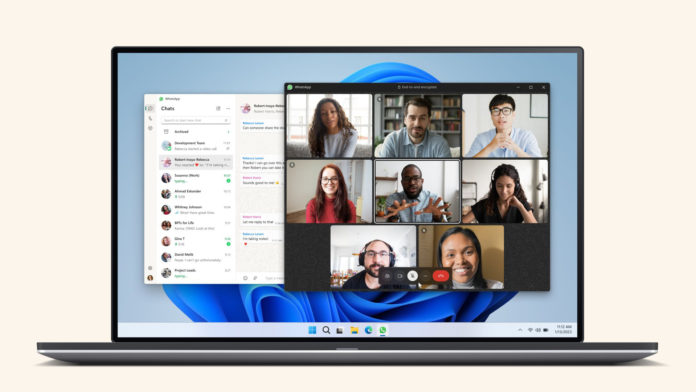WhatsApp may soon become Zoom’s next rival as it’s currently rolling out a revamped Windows client adding eight-person video calls. Additionally, the desktop app will now allow users to host audio calls with up to 32 people at once.
If any of this sounds familiar, that’s because these features have been on Android and iOS for quite a while now. This is part of a renewed effort by Meta to improve WhatsApp’s desktop clients (opens in new tab) so it’ll be more on par with the mobile app. In that same vein, the user interface has also been redesigned to make it look more similar to the smartphone app and several under-the-hood changes have been made to enhance multi-device linking. Now devices will be able to connect to WhatsApp on Windows more quickly than before while also unlocking new tools like link previews and stickers.
This update may not seem like much compared to Zoom which can hold up to 100 attendees in one meeting on its Basic plan. However, the company states it has plans to increase the limit of people the app can host in group calls. So it’s entirely possible that video calls on WhatsApp could one day match up against Zoom meetings in terms of sheer numbers. Meta certainly isn’t afraid of enabling massive groups on its platform as seen with the recent Communities feature.
Managing Communities
Speaking of Communities, WhatsApp on smartphones got an update (opens in new tab) earlier this week to help users manage their groups. Admins now have the ability to reject entrants. It’s a pretty small but much-needed change that really should’ve been there from the beginning. Also whenever you look up a contact’s name, you will see if the two of you are in the same community.
As for the future, Meta states it recently introduced a new beta for Android tablets and it’s working on one for Mac desktops. Not much was revealed, but according to a recent report from WABetaInfo, the latest Android beta (opens in new tab) introduces a new toggle for polls limiting participants to making just one choice. For macOS, it’s a complete unknown. Although it could be connected to the upcoming “native app build with Mac Catalyst (opens in new tab)” that’s currently in the works. We reached out to Meta for more info. This story will be updated if we hear back.
Source: www.techradar.com










